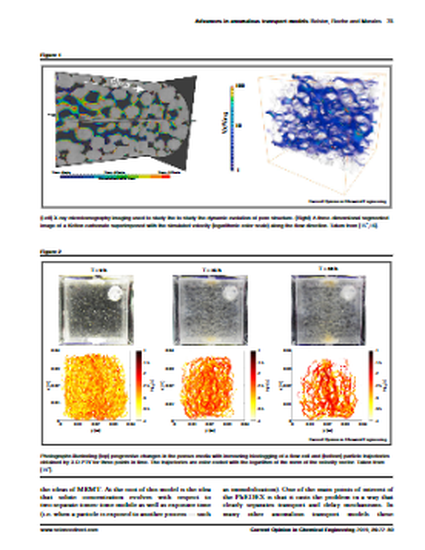
Article
Recent Advances in Anomalous Transport Models for Predicting Contaminants in Natural Groundwater Systems
Current Opinion in Chemical Engineering
(2019)
Abstract
High degrees of spatial heterogeneity in hydrologic systems pose a major barrier for their protection and remediation. Dissolved and particulate contaminants are mixed and retained over timescales ranging from seconds to years due to their interactions with these structural heterogeneities. Over the last two decades, a new class of models has demonstrated its capacity to describe observed ‘anomalous transport’ behavior that is ubiquitous to nearly all flowing waters. The promise of these models lies in their potential for predicting transport using minimal parameters, while remaining faithful to the underlying complexity of the system. In this review, we highlight recent experimental studies that have improved our understanding of the structural controls of anomalous transport, as well as modeling studies that use these new insights to better predict contaminant fate.
Disciplines
Publication Date
December, 2019
DOI
10.1016/j.coche.2019.09.006
Citation Information
Diogo Bolster, Kevin R. Roche and Verónica L. Morales. "Recent Advances in Anomalous Transport Models for Predicting Contaminants in Natural Groundwater Systems" Current Opinion in Chemical Engineering Vol. 26 (2019) p. 72 - 80 ISSN: 2211-3398 Available at: http://works.bepress.com/kevin-roche/4/
Creative Commons license

This work is licensed under a Creative Commons CC_BY International License.
